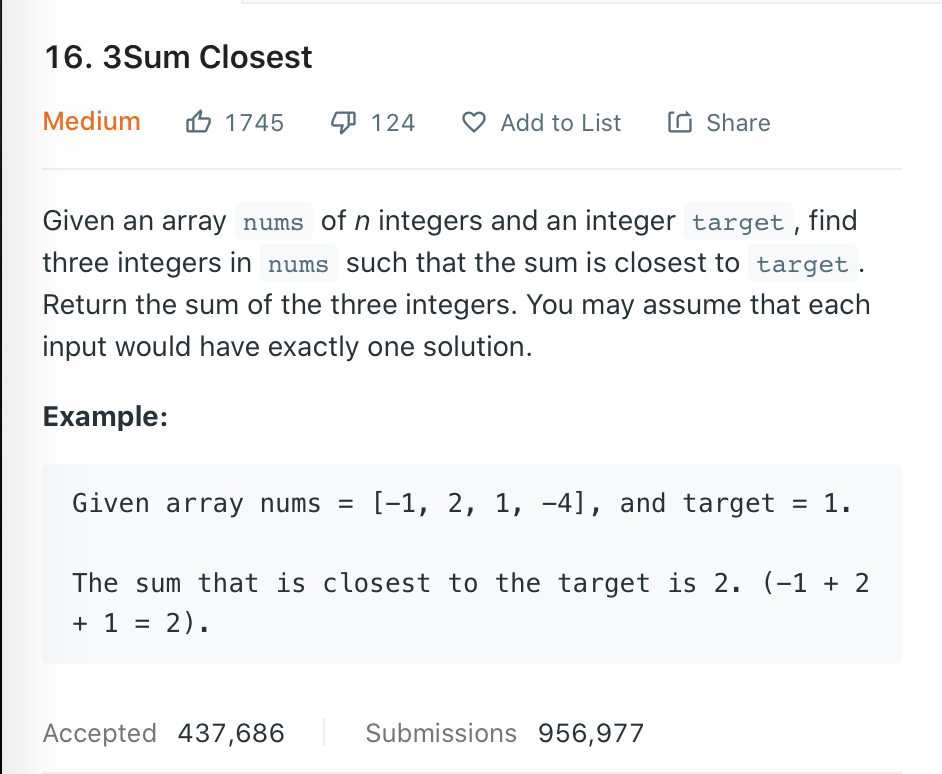
给出一个目标数字和一个数组,在这个数组里面找三个相加起来最接近目标数字的组合。用的方法其实和找三个数相加起来是0那道题一样,先排序,然后按顺序固定一个数,用两个指针搜索的形式,注意避免重复搜索即可。代码:
class Solution(object): def threeSumClosest(self, nums, target): """ :type nums: List[int] :type target: int :rtype: int """ totalLength = len(nums) if totalLength <= 3: return sum(nums) nums = sorted(nums) currClosest = sum([nums[0], nums[1], nums[-1]]) for i in xrange(totalLength - 2): if i > 0 and nums[i] == nums[i - 1]: continue l, r = i + 1, totalLength - 1 while(l < r): sumRet = nums[i] + nums[l] + nums[r] if sumRet == target: return target elif abs(currClosest - target) > abs(sumRet - target): currClosest = sumRet else: if sumRet > target: r -= 1 else: l += 1 return currClosest
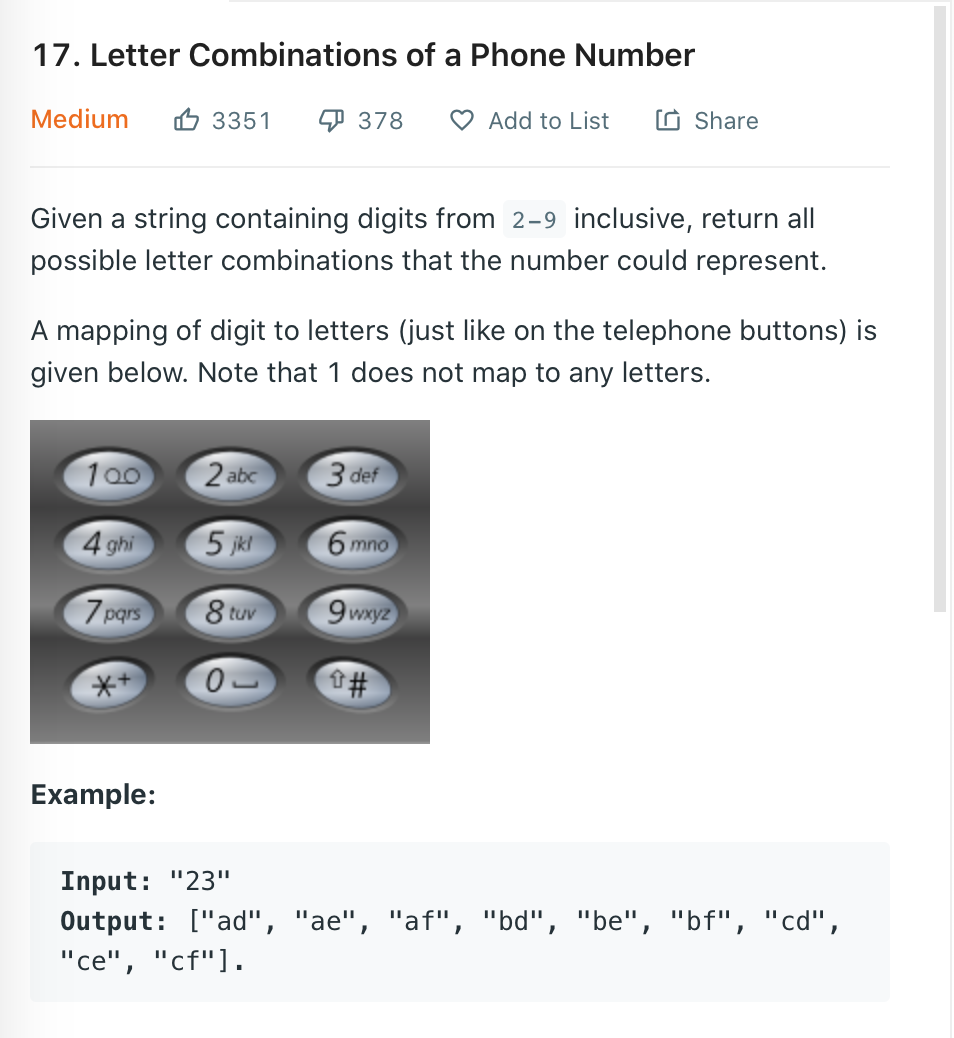
2-9的数字能代表的字母如图所示,给出一串数字号码,列出数字转换成字母后的所有可能性。题目比较简单,把所有可能性列出来即可。
class Solution(object): def letterCombinations(self, digits): """ :type digits: str :rtype: List[str] """ digitToLetter = { '2': ['a', 'b', 'c'], '3': ['d', 'e', 'f'], '4': ['g', 'h', 'i'], '5': ['j', 'k', 'l'], '6': ['m', 'n', 'o'], '7': ['p', 'q', 'r', 's'], '8': ['t', 'u', 'v'], '9': ['w', 'x', 'y', 'z'] } currCombinations = [] for digit in digits: if digit in digitToLetter: if len(currCombinations) == 0: currCombinations = digitToLetter[digit] else: _currCombinations = [] for letter in digitToLetter[digit]: _currCombinations += map(lambda x:x+letter, currCombinations) currCombinations = _currCombinations return currCombinations
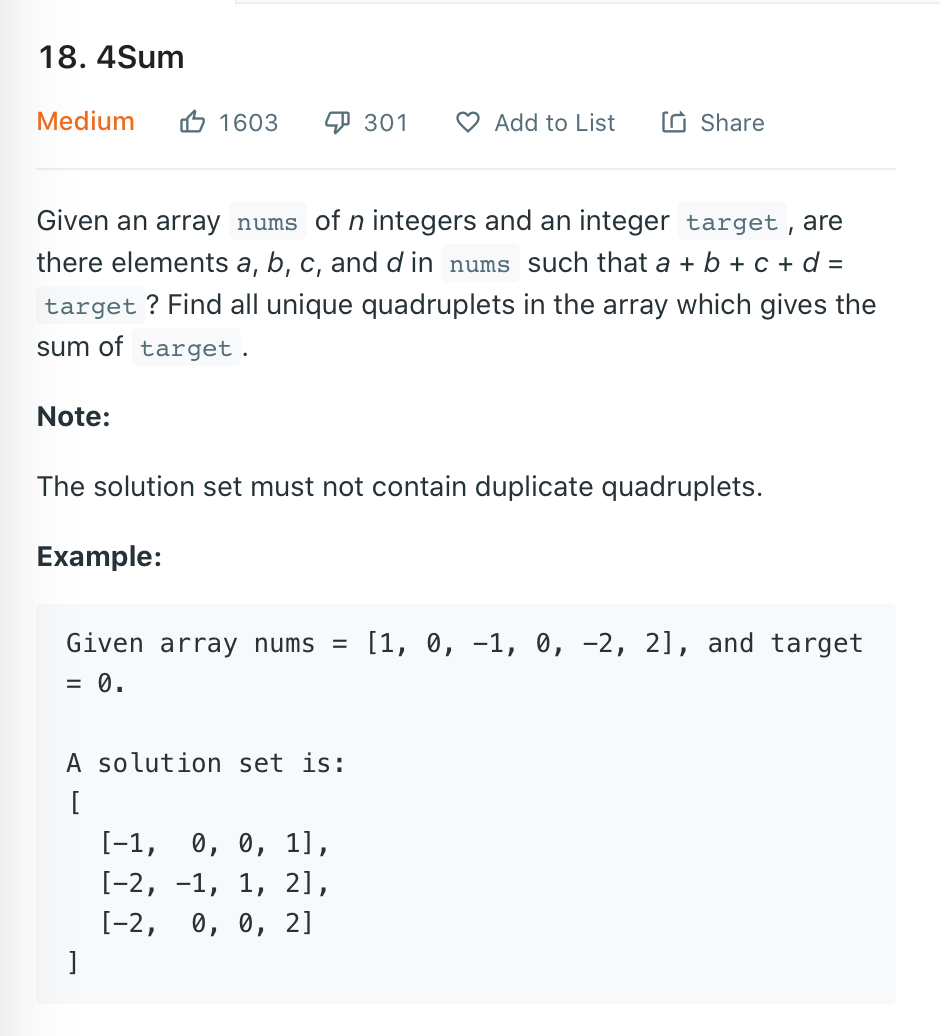
3Sum的升级版,从数组里面找出所有相加为0的四个数组合。我这里沿用了3Sum的办法,固定两个数,然后两个指针从这两个数右侧的两端开始找可能性,跑下来发现时间用了很多,看了别人的解法,主要在固定两个数的时候加了几步筛选步骤,避免了两个活动指针不必要的寻找。我的代码:
class Solution(object): def fourSum(self, nums, target): """ :type nums: List[int] :type target: int :rtype: List[List[int]] """ allPossibilities = [] totalLength = len(nums) if totalLength < 4: return allPossibilities nums = sorted(nums) for i in xrange(totalLength - 3): if i >= 1 and nums[i] == nums[i - 1]: continue # 这里可以继续优化 for _i in xrange(i + 1, totalLength - 2): if _i > (i + 1) and nums[_i] == nums[_i - 1]: continue # 这里可以继续优化 l, r = _i + 1, totalLength - 1 while(l < r): sumRet = sum([nums[i], nums[_i], nums[l], nums[r]]) if sumRet == target: allPossibilities.append([nums[i], nums[_i], nums[l], nums[r]]) l += 1 while(nums[l] == nums[l - 1] and l < r): l += 1 elif sumRet < target: l += 1 else: r -= 1 return allPossibilities
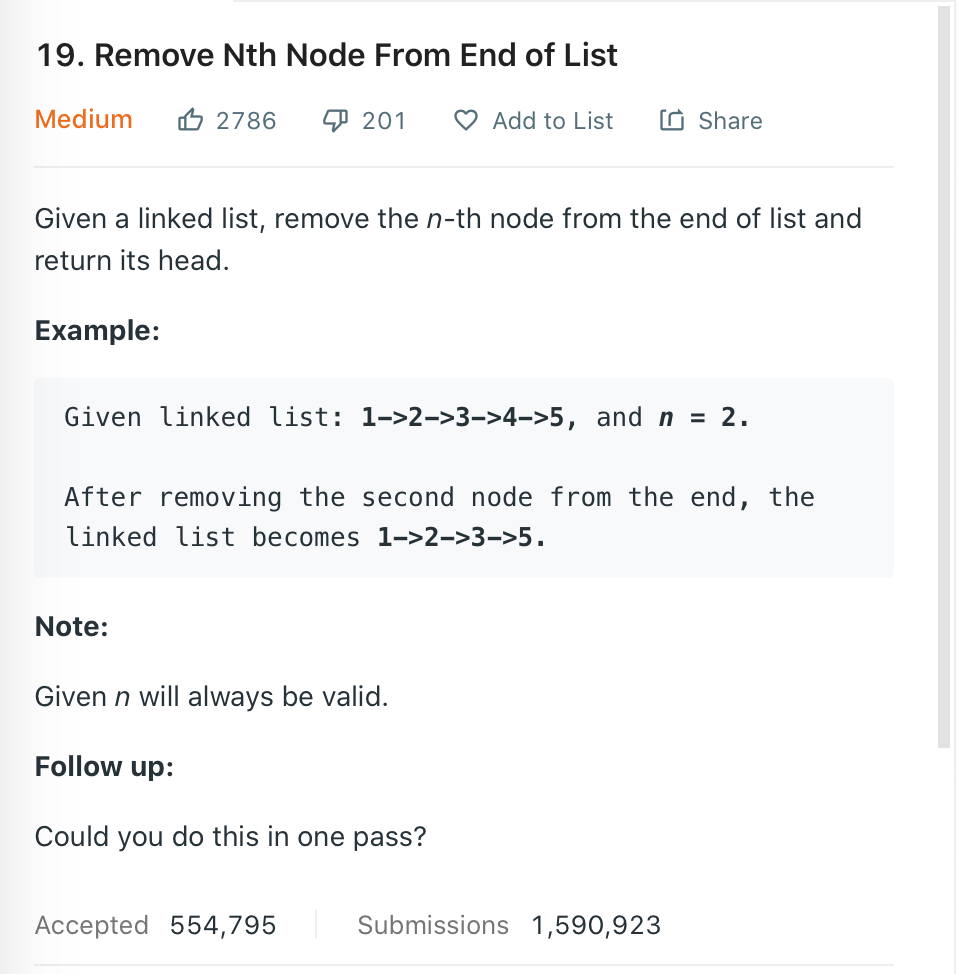
给出一个数字n和一串链表,把这个链表的倒数第n个节点删除(只能对链表进行一次遍历)。我的做法是一边遍历链表一边把链表的节点存到一个数组里面,最后根据数组的长度找到第n个节点,然后利用数组存下来的节点直接进行链表节点的切割。
# Definition for singly-linked list. # class ListNode(object): # def __init__(self, x): # self.val = x # self.next = None class Solution(object): def removeNthFromEnd(self, head, n): """ :type head: ListNode :type n: int :rtype: ListNode """ nodeList = [] p = head while(p): nodeList.append(p) p = p.next if n == len(nodeList): head = head.next else: preNode = nodeList[-(n+1)] preNode.next = None if n == 1 else nodeList[-(n-1)] return head
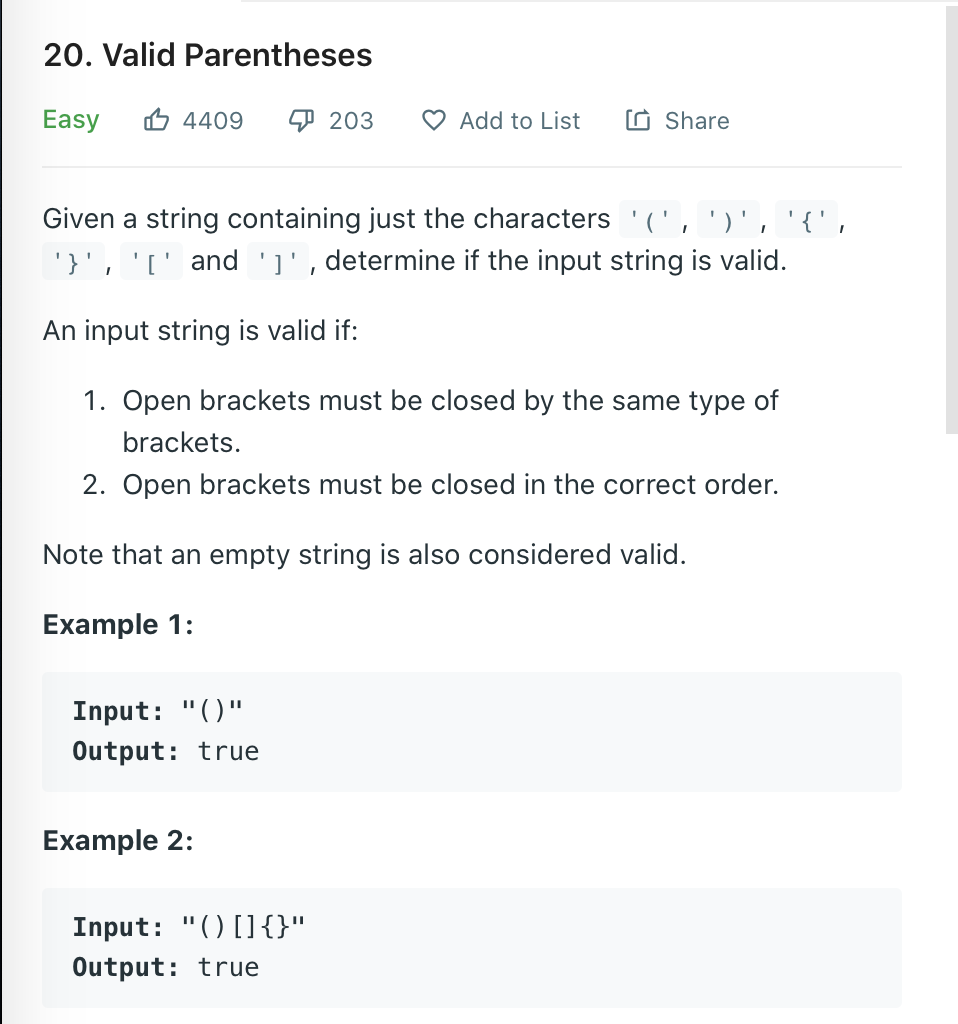
检查给出的括号字符串是否正确(对称),利用栈可以简单的处理这道题。遇到左括号压栈,遇到右括号弹栈并检查这对括号是否匹配,不匹配直接返回False,直到字符串遍历完毕,最后栈里面是空的,则是一个正确的括号字符串。
class Solution(object): def isValid(self, s): """ :type s: str :rtype: bool """ pre = ['(', '{', '['] suf = [')', '}', ']'] sufToPre = {')': '(', '}': '{', ']': '['} q = [] for letter in s: if letter in pre: q.append(letter) elif letter in suf: if q == [] or q.pop() != sufToPre[letter]: return False else: return False return True if q == [] else False